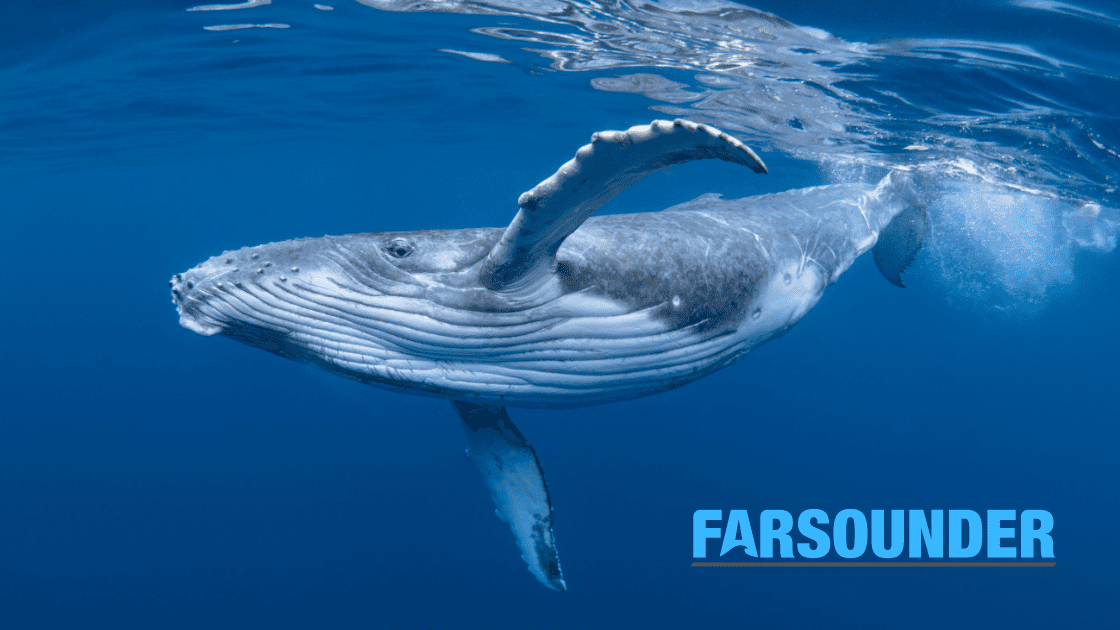Whales are magnificent, intelligent mammals whose life span can be as long as a human’s. However, their lives can be cut short. As many as 80 whales are estimated to die each year off the West Coast of the US as a result of ship strikes, and about a third of all Right Whale deaths in the Atlantic are attributed to ship strikes. Sperm Whales in the Mediterranean are also listed as an endangered species, and ship strike is their leading cause of death. Whale avoidance is clearly top of mind for mariners. It is time to explore how currently available technology can help in this endeavor.
As the world looks to new technologies to assist in whale avoidance, it is important to ensure there is no impact on the whales and the environment. Likewise, as governmental regulations evolve, operating vessels near whales requires a strong understanding of the rules implemented to protect them. There should be strict adherence to safe practices that coincide with the use of the right technologies.
NOAA is taking steps to protect endangered North Atlantic Right Whales (NARW). They proposed rule changes in regard to vessel operation speeds around these whales. Many other countries have similar regulations though the US is considered to have the most robust protections. As with any marine regulations, it is the responsibility of the vessel operator to ensure that they are operating in accordance with the laws and regulations for the waters in which they are operating. It is also important to consider other tools that can also be used to detect and avoid whales such as 3D Forward Looking Sonar (FLS), coupled with above-water sensors such as radar and camera systems.
FarSounder is the leading developer of 3D FLS. Their early motivation to create a new forward looking sonar technology was from an environmental point of view. New England, in the northeastern US, is not only FarSounder’s home, but is also home to NARW. One of the major causes of death of this species is vessel strikes. The founder set out to develop a technology to help vessels detect and avoid whales. Since the early development of FarSounder’s legacy FLS in 2005, there have been numerous anecdotes from Argos FLS customers saying they were able to use their FLS to safely detect whales under the water.
The FarSounder Team is actively involved in collecting engineering data on the acoustic reflectivity of various whale species. Last year, they started studying the performance of the 3D FLS to detect the presence of humpback whales, and collecting target strength measurements of the whales, in controlled engineering tests. The team followed all regulations regarding vessel operation around whales, including having certified Protected Species Observers (PSOs) onboard during their work. They consistently detected humpback whales out to 500m range using their standard Argos FLS product and its standard functionality.
They are now planning the next round of fieldwork. Their plans include longer-range tests, and data collection with different species so that classification models may be developed. The goal is to add to the scientific knowledge about these incredible animals and provide quantifiable performance metrics for a variety of whale types in a variety of environments. Of course, all of the data collection efforts follow detailed plans to ensure that all environmental regulations are followed and that these efforts will not impact the creatures they are trying to study.
It is important to note the Argos sonars are benign to marine life. Their team has worked hard to ensure their technology cannot acoustically harass marine mammals. FarSounder has always focused on developing products safe for marine mammals and is equally (or more) benign than other commonly accepted marine sensors (i.e. echosounders). The safety level was evaluated and determined using the guidelines and tools developed by the National Marine Fisheries Service.
The topic of marine mammal detection is something that FarSounder’s engineering team has been working on for over two decades. The subject has been a motivation for them from the beginning. They are taking the next step in helping the whale population by developing an online course for yacht, cruise ship, and other commercial vessel bridge crews.
This will be a 3-4 hour course being created in partnership with Azura and the International Seakeepers Society. This training will include on-demand videos and/or reading material followed by questions. Here are some of the proposed topics to be covered:
- How to spot whales
- How to determine whale species
- How to report sightings and to whom
- How to operate vessels safely around whales
- Regulations in US waters and elsewhere
- Fundamentals of safe sonar operations around whales
- Understanding 3D FLS acoustics
Another interesting capability of the Argos FLS is its users can anonymously share bathymetric data across the fleet and contribute to Seabed 2030. With this infrastructure in place, they envision adding functionality to collect other observations of interest to the global community. They plan to start by adding a whale sighting logging feature to their software to log location and time. These sightings will be sent to FarSounder’s servers and will be forwarded to the relevant endpoints. For users who have completed the online training class, their observations will be even more valuable to researchers and whale conservation teams since the knowledge of the observer will be greater with training.
With staggering research statistics such as: To maintain NARW herd there is a need to limit to .7 deaths per year. The marine community has to do something. The community hopes that someday Humpbacks will no longer be identified by their scars. It is the entire maritime community’s responsibility to do what they can to protect our precious marine resources and sea life. There is technology that can help. It is time to look at what is available and how to incorporate it into navigation systems to limit the number of these tragic accidents.
FarSounder Argos Forward Looking Sonare detecting Humpback Whales at 500m range in the North Atlantic Ocean off the coast of New England



